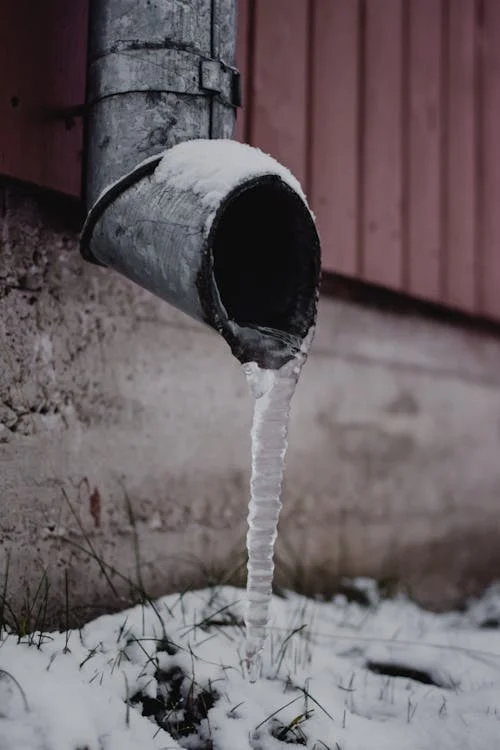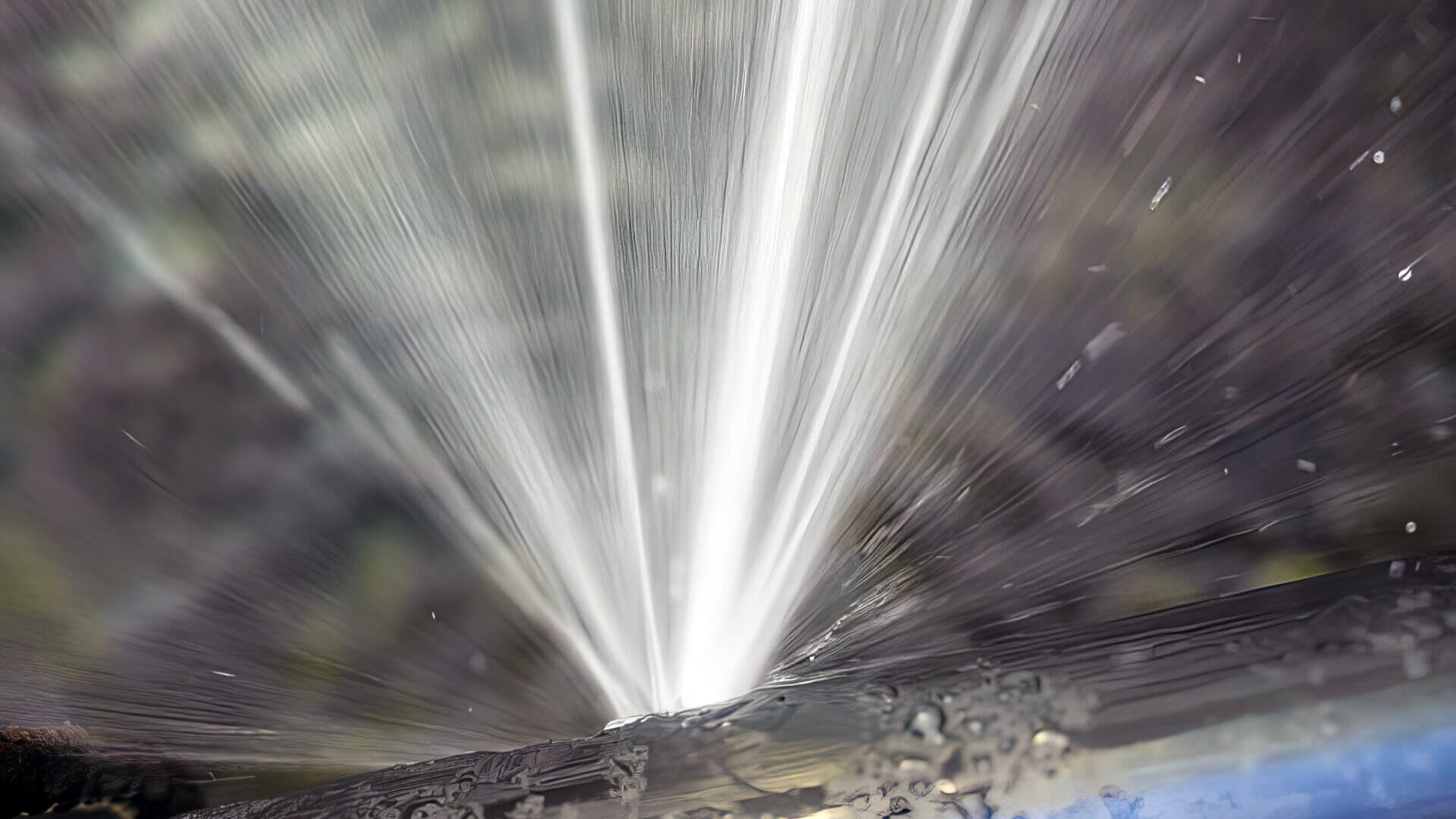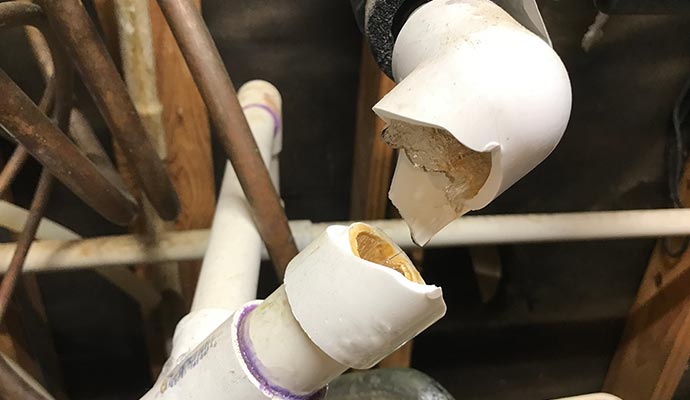The Hidden Dangers of a Burst Pipe and How to Fix It Quickly
The Hidden Dangers of a Burst Pipe and How to Fix It Quickly
Blog Article
Avoiding Burst Water Lines: Crucial Tips to Protect Your Pipes
Protecting against burst pipelines is a critical concern for homeowners, especially throughout cooler months when the threat of freezing is increased. Executing critical procedures such as proper insulation, routine examinations, and keeping consistent interior temperature levels can substantially decrease the chance of pipe failure. In addition, understanding emergency procedures equips property owners to respond swiftly to prospective plumbing problems. Many are unaware of the particular vulnerabilities that their pipelines may deal with. Exploring these vulnerabilities can supply very useful insights right into securing your pipes system properly.
Understand Pipe Vulnerabilities
Understanding pipe vulnerabilities is crucial for efficient pipes upkeep and preventing costly damage. A number of factors add to the susceptibility of pipes to ruptureds, consisting of material structure, age, and ecological conditions. Older pipelines, especially those made from galvanized steel or polybutylene, usually weaken over time, causing increased danger of tears and leakages.
Temperature fluctuations can also dramatically impact pipe integrity. In cooler environments, water entraped in pipelines can freeze, exerting and expanding pressure on the pipeline walls, which might inevitably lead to a ruptured. High water stress can stress pipelines, particularly at bends and joints, heightening the possibility of failing.

Insulate Pipeline Effectively
Correct insulation of pipelines is critical for preventing freezing and subsequent ruptureds throughout cool climate (burst pipe). Insulating your plumbing system properly safeguards versus temperature level goes down that can cause expensive damage. Begin by identifying at risk areas where pipelines are revealed to outside temperature levels, such as basements, attics, and exterior wall surfaces
Use foam pipeline insulation sleeves or cover insulation tape around these areas to provide a safety obstacle. Make sure that all sections of the pipes, particularly those with limited warmth direct exposure, get ample insulation. Pay special attention to installations and joints, as these are much more prone to cold.
When protecting, it's important to choose materials that meet neighborhood building ordinance and are appropriate for the particular atmosphere. Fiberglass insulation is typically recommended for its thermal resistance properties. Furthermore, consider making use of warm wires or tape in extreme problems, which can be connected in to supply additional warmth
Regularly check protected pipes for any kind of signs of wear or damages, as jeopardized insulation can diminish its effectiveness. By taking these aggressive measures, you significantly reduce the danger of pipeline bursts, making certain a trusted pipes system throughout the winter season.
Maintain Regular Temperature Level
A steady interior temperature level is essential for preventing ruptured pipelines throughout the cold months. When temperature levels decrease, water within pipelines can ice up, creating and expanding pressure that may ultimately trigger the pipelines to ruptured. To alleviate this threat, homeowners ought to preserve a constant temperature throughout their space, preferably no reduced than 55 ° F(13 ° C)Making use of a programmable thermostat can help manage indoor temperatures properly, making certain that areas with pipes continue to be cozy also when your home is empty. Pay unique interest to areas that are much more vulnerable to cold, such as attic rooms, basements, and garages. Maintaining closet doors open under sinks can likewise allow warmer air from the home to flow around plumbing.
This minor circulation of water can protect against freezing by easing stress within the pipes. By applying these strategies, house owners can substantially reduce the threat of pipe bursts and guard their pipes systems versus the harsh winter components.
Frequently Check Pipes
Normal examinations of pipes systems are vital for avoiding ruptured pipes and maintaining total home honesty. During these link evaluations, it is important to analyze noticeable pipelines for indicators of rust, leaks, or put on.
Additionally, examining joints and connections is important, as these factors are commonly vulnerable to leaks. Homeowners ought to additionally examine water pressure levels, as excessive stress can strain the pipes system and enhance the danger of pipe ruptureds.
Take into consideration scheduling expert plumbing inspections at least when a year, specifically prior to winter, to guarantee your system is prepared for cooler temperature levels. By being proactive in your method, you can guard your home versus the expensive and turbulent effects of burst pipes.
Know Emergency Treatments
Understanding emergency treatments is important for each house owner, specifically after conducting routine plumbing examinations. Being prepared for a website link pipes emergency situation can considerably reduce damages and conserve costs. Initially, find your primary water shut-off shutoff; it is usually located near the water meter or where the main line enters your home. Familiarize yourself with its procedure, as closing off the water promptly can avoid comprehensive flooding.
Following, keep vital tools helpful. A plumbing emergency situation kit should consist of a wrench, plunger, and towels, in addition to a flashlight and a container for small leakages. Furthermore, consider having the get in touch with info for a relied on plumber easily available, ought to the situation rise beyond your control.
If you detect a leakage or ruptured pipe, immediately switch off the water supply and alert your plumber. Record the damages with photos for insurance policy purposes. Recognize the signs of prospective pipes issues, such as unusual water stress changes or damp places on walls
Eventually, positive knowledge and quick activity are essential in taking care of pipes emergencies, guaranteeing your home continues to be protected and lessening prospective damage.

Verdict
In verdict, protecting against ruptured pipes necessitates a complex method that consists of understanding pipeline susceptabilities, appropriate insulation, keeping constant interior temperatures, regular examinations, and understanding of emergency procedures. By carrying out these vital techniques, the danger of plumbing failures can be dramatically minimized, therefore making sure the long life and effectiveness of the pipes system. Positive procedures not just protect against prospective damages but additionally add to general water conservation and the defense of home.
In colder climates, water entraped in pipelines can freeze, applying and increasing stress on the pipeline walls, which might inevitably lead to a get redirected here burst. When temperature levels drop, water within pipes can ice up, producing and increasing pressure that may eventually create the pipelines to burst. By carrying out these approaches, property owners can dramatically minimize the risk of pipe bursts and secure their pipes systems versus the harsh winter season aspects.

Report this page